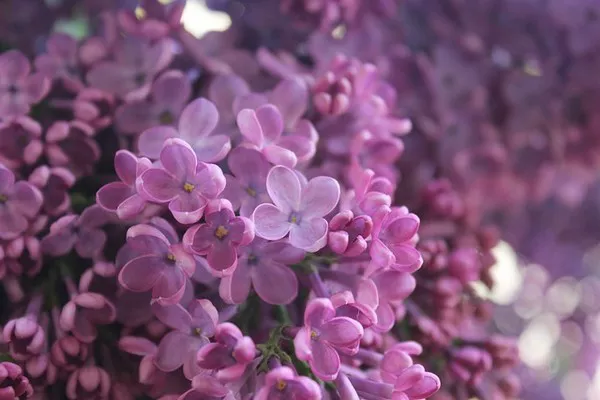In the intricate dance of pollination, honey bees play a crucial role in sustaining the delicate balance of ecosystems and supporting global food production. Central to their mission is the quest for nectar and pollen, the lifeblood of a hive. Understanding the floral preferences of honey bees is essential for promoting their well-being and ensuring their continued contribution to our environment. In this article, we explore the diverse world of flowers that captivate the attention of honey bees and delve into the factors that make certain blooms irresistible to these industrious pollinators.
The Language of Flowers
Honey bees are not mere visitors to flowers; they are active participants in a complex symbiotic relationship. As they forage for nectar and pollen, bees inadvertently transfer pollen from one bloom to another, facilitating the process of pollination that is vital for the reproduction of flowering plants. The attraction between honey bees and flowers is not arbitrary; it is an eloquent exchange orchestrated by the colors, scents, shapes, and nectar content of blossoms.
Color Palette
Honey bees, like many pollinators, are drawn to a specific color palette. Flowers that are blue, purple, and yellow are particularly attractive to these diligent insects. Blue and purple hues are associated with ultraviolet patterns that are visible to bees, making these colors stand out in the landscape. The ultraviolet patterns guide honey bees to the nectar and pollen-rich centers of flowers. Yellow, another favorite color, is a beacon for bees, signaling the presence of abundant nectar.
Notable Blossoms
Lavender (Lavandula spp.): The fragrant spikes of lavender not only fill the air with a delightful aroma but also beckon honey bees with their rich purple hues. Lavender’s long blooming season ensures a steady supply of nectar for foraging bees.
Sunflowers (Helianthus annuus): With their radiant yellow petals arranged in a distinctive spiral pattern, sunflowers are a visual feast for honey bees. These towering blooms provide copious amounts of nectar, attracting a multitude of pollinators.
Blueberries (Vaccinium spp.): In addition to their delicious berries, blueberry bushes produce small, bell-shaped flowers that honey bees find irresistible. The blue and white blossoms provide a vital early-season food source for bees.
Clover (Trifolium spp.): Common in lawns and meadows, clover’s small, globe-like flowers are a staple in the honey bee’s diet. The abundance of sweet nectar makes clover a valuable resource for beekeepers.
Scent and Fragrance
The allure of a flower extends beyond its visual appeal; scent plays a pivotal role in attracting honey bees. Flowers with a strong, sweet fragrance are more likely to catch the attention of foraging bees. The aromatic compounds emitted by blooms serve as olfactory signals, guiding bees to a rewarding source of nectar.
Notable Fragrant Blooms
Jasmine (Jasminum spp.): Renowned for its intoxicating fragrance, jasmine is a favorite among honey bees. The small, white flowers release a sweet scent that lingers in the air, creating a sensory haven for foraging bees.
Lilac (Syringa spp.): The clusters of fragrant lilac blossoms are a magnet for honey bees. The heady aroma, combined with the visual appeal of the flowers, makes lilac a valuable addition to gardens seeking to attract pollinators.
Honeysuckle (Lonicera spp.): As the name suggests, honeysuckle is a sweet treat for honey bees. The tubular flowers come in various colors, and their delightful fragrance makes them a popular choice for both bees and garden enthusiasts.
Shapes and Landing Pads
The morphology of flowers also influences their appeal to honey bees. The structure of a bloom determines how accessible the nectar and pollen are to foraging bees. Flowers with open shapes, providing easy access to their reproductive parts, are more likely to attract honey bees.
Notable Flower Structures
Daisy (Asteraceae family): The classic daisy structure, with a central disc surrounded by ray-like petals, offers an easily accessible landing pad for honey bees. This design allows bees to efficiently collect nectar and pollen.
Foxglove (Digitalis purpurea): The tubular flowers of foxglove are well-suited for bees with long proboscises. The downward-facing blooms provide a secure platform for bees to access nectar hidden within the depths of the flower.
Snapdragon (Antirrhinum majus): The distinctive snapdragon flowers have a unique shape that facilitates bee pollination. When a bee lands on the flower, the “snap” mechanism releases pollen onto the bee, promoting cross-pollination.
Nectar Content
While the visual and olfactory cues of flowers are important, the nectar within blooms is the ultimate reward for honey bees. Nectar serves as the primary energy source for bees, fueling their flight and sustaining the hive. Flowers with higher nectar concentrations are more attractive to honey bees, as they offer a greater nutritional incentive.
Notable Nectar-Rich Flowers
Borage (Borago officinalis): Borage is not only visually appealing with its vibrant blue flowers but is also a nectar powerhouse. Honey bees are drawn to the abundant nectar, and borage is a popular choice for bee-friendly gardens.
Phacelia (Phacelia spp.): Often used as a cover crop, phacelia boasts long spikes of tubular flowers that are rich in nectar. Its popularity among honey bees makes it a valuable addition to pollinator-friendly planting schemes.
Monarda, Bee Balm (Monarda spp.): Aptly named, bee balm is a favorite of honey bees. The tubular flowers, available in various colors, are a rich source of nectar, and their distinctive aroma further enhances their appeal.
Conclusion
In the intricate tapestry of nature, honey bees and flowers engage in a ballet of mutual dependence. Understanding the preferences of honey bees for certain flowers allows us to create environments that support their well-being and contribute to the preservation of biodiversity. By selecting a diverse array of blooms that cater to the visual, olfactory, and nutritional needs of honey bees, we can play an active role in fostering a flourishing ecosystem. As stewards of the environment, let us celebrate the enchanting partnership between honey bees and flowers and work towards creating gardens and landscapes that are vibrant havens for these essential pollinators.


